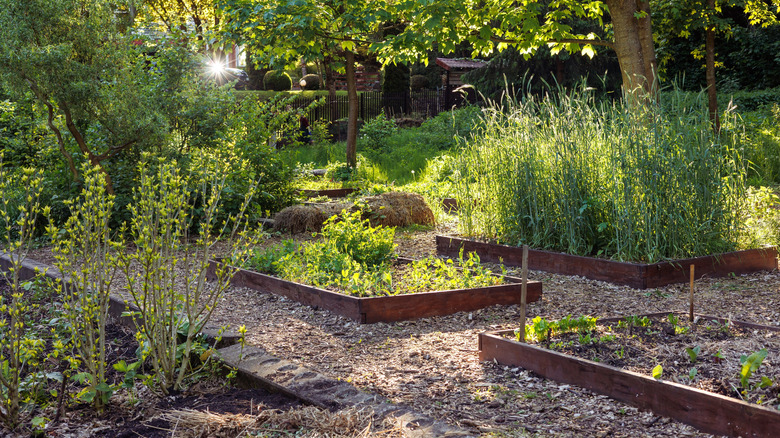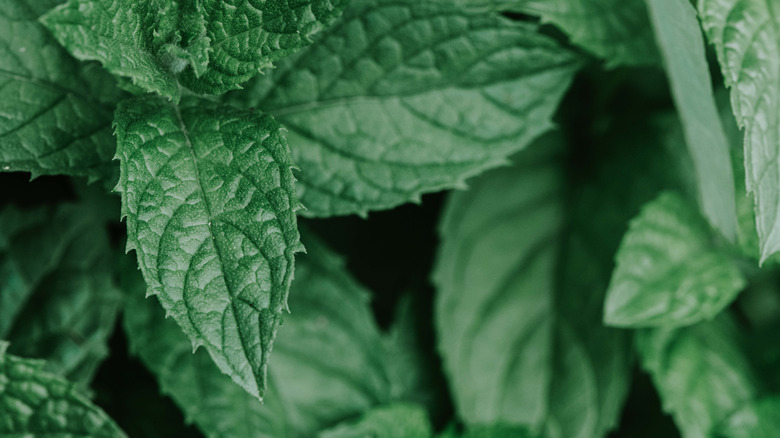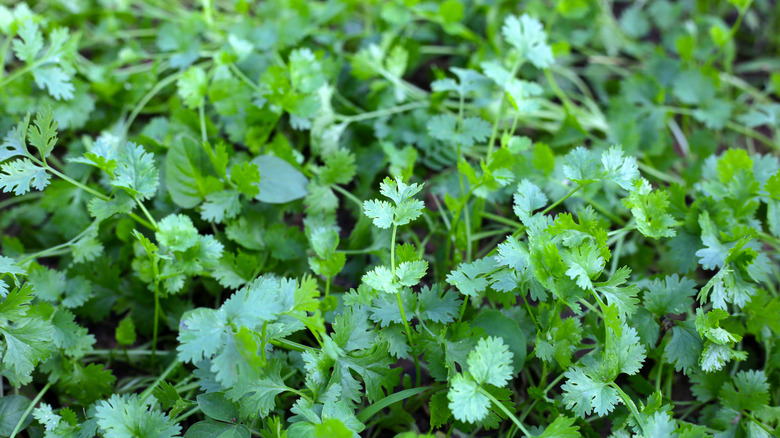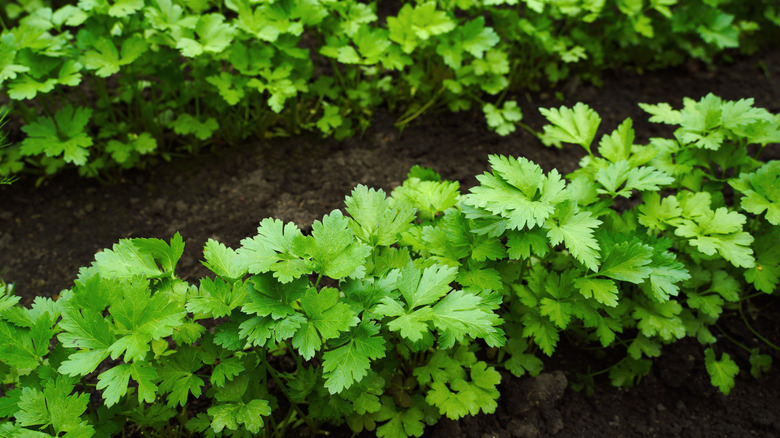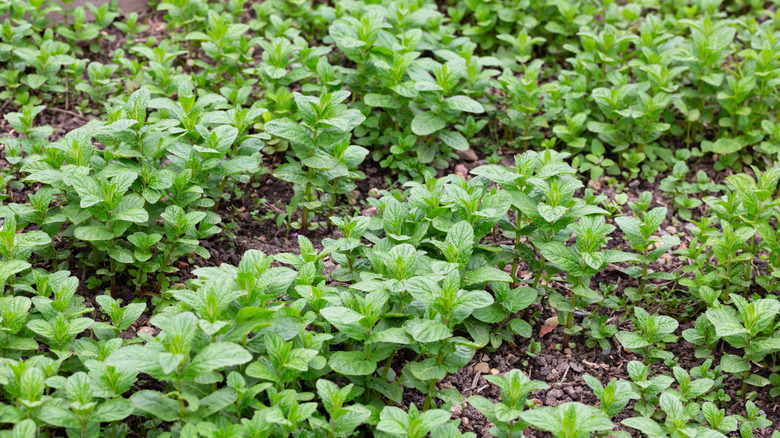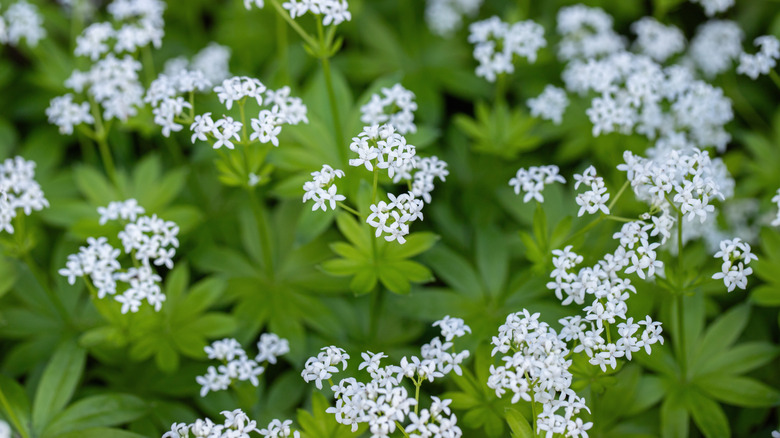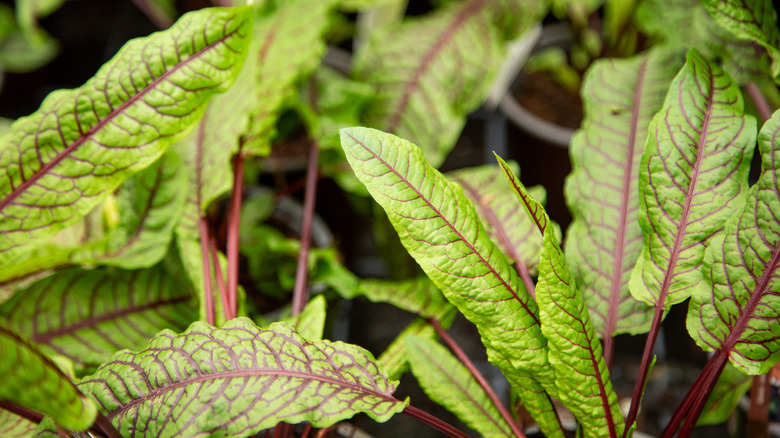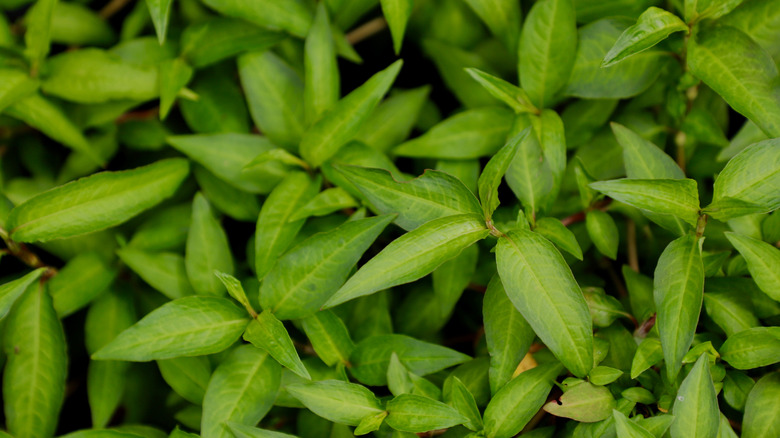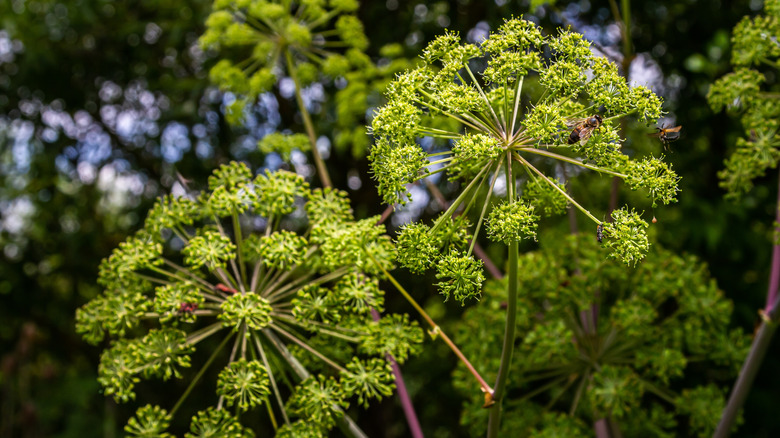12 Easy-To-Grow Herbs That Thrive In Shade With Little To No Sun
While some herbs, like rosemary (Salvia rosmarinus), oregano (Origanum vulgare), and basil (Ocimum basilicum), are known sun-seekers that can take the heat and thrive all summer long, others actually grow better in the shade. In fact, some of the most flavor-packed herbs like mint (Mentha spp.), cilantro (Coriandrum sativum), and chives (Allium schoenoprasum) prefer some shade, and may thrive because of it.
But what do we mean when we say shade? Shade can come in different forms. Partial shade, for example, means a spot that gets a few hours of sunlight — often gentle morning sun — but stays sheltered from the harsh afternoon rays. Dappled shade happens under trees or lattices where sunlight is filtered, softening its intensity. And then there's full shade, where plants receive little to no direct sunlight at all.
Luckily, no matter which kind of shade you are working with, there's an herb that you can grow in it. So, whether you're looking to fill a dimly lit patch with lush greenery, boost your cooking with fresh, fragrant herbs, or you simply want low-maintenance plants that won't complain about the lack of sun, there's a surprising range of herbs ready to flourish in shadier parts of your garden. Here are 12 of the best.
Mint
Mint is one of the easiest herbs to grow from seed, and is the perfect fragrant addition to a shady corner of your garden. Hardy across USDA zones 2 through 10, this perennial herb thrives in partial shade, consistently producing its signature refreshing, aromatic leaves. It's happiest when planted in rich soil and watered consistently to keep the soil moist. Avoid overwatering, however, as this can lead to disease. Mint is a notoriously fast spreading and growing it in pots or containers may be a good idea if you're worried about it getting unruly in your garden.
Chives
Chives are one of the easiest herbs to grow and are perfect for brightening up any partially shaded spot in your garden or porch. Hardy in zones 4 through 10, these perennials produce delicate purple blooms each spring and attract pollinators like bumblebees. While they thrive in full sun, chives also do well in partial shade, where cooler conditions keep them lush and productive. Simply plant them in rich, well-draining soil, and water regularly for a steady harvest.
Cilantro
Cilantro is an herb that actually prefers cooler weather — it can even bolt in summer heat — making it a great option for lightly shaded herb gardens. Hardy in zones 2 through 10, it grows slower in shade, which means a longer harvest season and more fresh leaves. It's also easy to grow and care for your cilantro plant; simply sow seeds directly into garden beds or containers with well-drained soil, keep the soil moist, and harvest outer leaves often to encourage new growth. Both the leaves and seeds are edible, making cilantro a productive and versatile kitchen staple.
Lemon balm
As its name suggests, lemon balm (Melissa officinalis) is a fragrant, lemon-scented perennial in the mint family. It thrives in partial shade, especially in hotter regions where full sun can scorch its leaves. Hardy in zones 3 through 8, it grows easily in garden beds or containers, reaching up to 2 feet tall with bright green leaves and small white flowers that attract pollinators like bees. This herb prefers moist, well-draining soil and self-seeds readily, so keep this in mind when choosing where to plant it, as you may want to keep it in a pot.
Parsley
Parsley (Petroselinum crispum) is often overlooked as just a garnish, but it's a versatile, easy-to-grow herb that thrives in partial shade — and is the one herb you should plant near apple and pear trees. Both curly and flat-leaf varieties do well in cooler, shadier spots, where they have an extended growing season and a longer harvest. Growing as a biennial in zones 5 to 11, parsley prefers rich, evenly moist soil and regular watering. Regular harvesting of outer stems encourages continuous growth.
Lovage
Lovage (Levisticum officinale) might not be the most common plant found in thriving herb gardens, but it's a low-maintenance, worthwhile addition. This hardy perennial, suitable for USDA zones 4 through 8, has a celery-like flavor and can reach heights of up to 6 feet, adding vertical interest while tolerating lower light conditions. It thrives in moist, well-drained soil, and occasional trimming keeps it healthy and encourages fresh growth. Lovage's small yellow flowers attract pollinators, but can be removed to extend leaf harvest, so you can choose whether you want a fuller harvest or more buzz about your yard.
Thyme
Though it is a sun-loving herb, thyme (Thymus vulgaris) actually handles partial shade well. In hot, sunny areas, a bit of shade helps it tolerate dry conditions better. Lower light may reduce flowering, but that won't affect the herb's utility in the kitchen. Hardy in zones 5 through 9, thyme is an easy-to-grow option that does well in garden beds, along shady paths, and even on windowsills. It prefers well-drained soil and is drought tolerant once established. Regular harvesting of fresh stems encourages fuller, stronger growth, providing a steady supply of flavorful leaves with minimal care, making thyme a tasty addition to any herb garden.
Sweet woodruff
While most herbs on this list thrive in partial shade, sweet woodruff (Galium odorata) prefers full shade. Perfect for cool, moist spots under trees or along shaded paths, this easy and vigorous perennial produces green leaves and small white tubular flowers while spreading to form a low-growing carpet that helps suppress weeds. Hardy in zones 4 through 8, it grows best in rich, consistently moist soil and becomes more fragrant with its grassy vanilla scent as the leaves dry. For gardeners working with full shade, this is an herb that brings life to areas where few other plants thrive.
Sorrel
Sorrel (Rumex acetosa) is an undemanding leafy perennial that grows well in lower light, making it ideal for gardens with little direct sun. Hardy in zones 4 through 8, it does well in partial shade and cooler, moist environments. Also called red sorrel, it establishes quickly and returns year after year with minimal effort. Harvest can begin about a month after transplanting, when stems reach 4 to 6 inches in height, and removing flowers encourages continued growth. Sorrel's upright form and bright green foliage add texture and color to shade-friendly herb gardens.
Vietnamese coriander
For gardens in USDA zones 9 through 11, Vietnamese coriander (Persicaria odorata) is a low-maintenance herb that thrives in partial shade. Unlike true cilantro, this perennial doesn't bolt quickly in heat, instead producing flavorful leaves well into summer. It prefers consistently moist soil and can even handle some standing water. Regular harvesting not only provides a steady supply of its distinctive peppery leaves but also encourages bushier, more vigorous growth. In cooler climates, you can grow it as an annual or move it indoors during winter to protect it from frost.
Angelica
Angelica (Angelica archangelica) is a perennial herb that can reach up to 6 feet in height and 4 feet in width, perfect for adding drama to shaded garden spots. Hardy in USDA zones 5 through 7, it thrives in rich, moist soil and produces hollow stems and large flower clusters that add texture to shady borders. Its young stems have a subtle licorice flavor, ideal for candying or making jams and preserves. Angelica is simple to grow, especially in cooler, shaded areas and can even tolerate severe winter frosts, making it a showstopper that earns its keep in any herb garden.
French tarragon
For a hardy, flavorsome herb that'll grow well in shady areas of your garden, it's hard to go past French tarragon (Artemisia dracunculus var. sativa). Hardy in USDA zones 3 through 11, this low maintenance herb is known for its anise-like flavor, which makes it a chicken salad staple. It grows well in partial shade and, in areas of the country where the summer heat reaches up to 90 degrees Fahrenheit, shading tarragon can increase its chance of survival. It's an herb that is best planted in well-draining soil, and which benefits from trimming in spring, as this encourages new growth.
